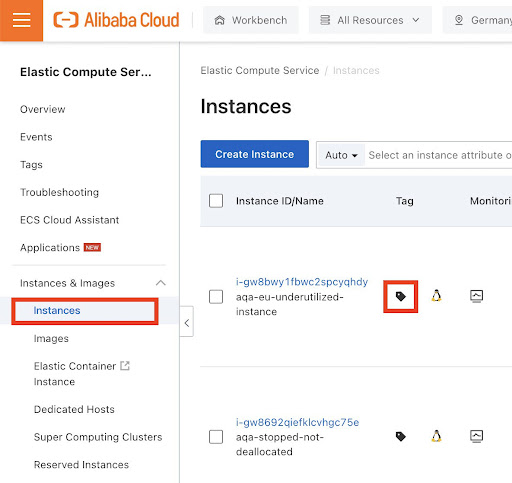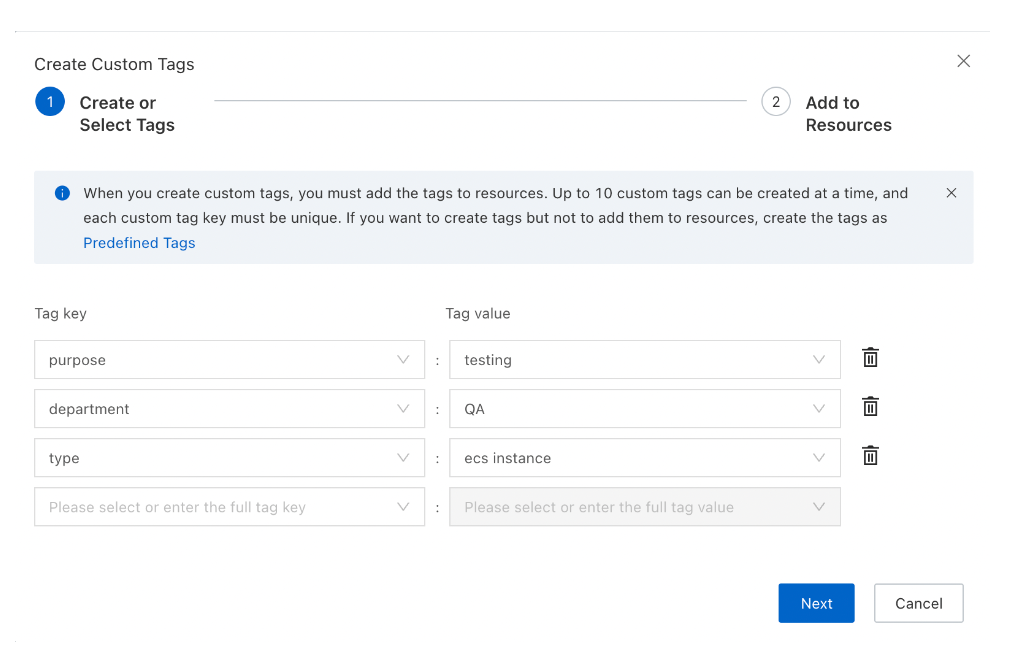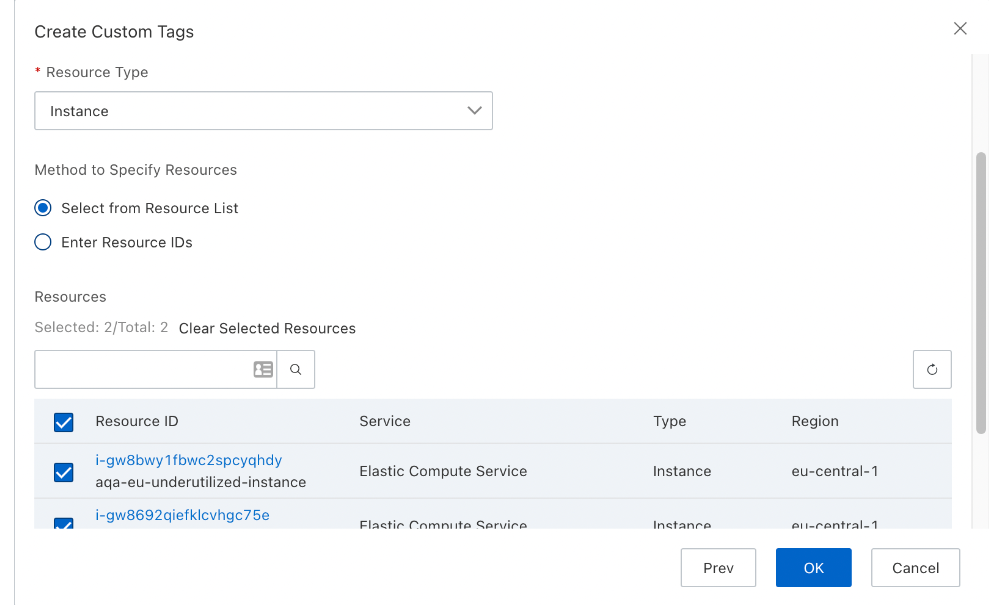Descrição do Problema
Um sistema de marcação permite que as empresas melhorem a governança da nuvem, aumentem a visibilidade e o controle sobre a infraestrutura da nuvem. As marcações ajudam a gerenciar, identificar, organizar, filtrar e pesquisar recursos da nuvem. As marcações podem ser criadas para classificar recursos por proprietário, ambiente de TI, propósito ou outros critérios.

A marcação adequada de recursos de nuvem também atende a objetivos de otimização de custos e oferece uma oportunidade para equipes de engenharia evitarem recursos órfãos e não utilizados, rastrear custos de nuvem em detalhes por tags de alocação de custos e reduza a conta de nuvem da sua empresa.
A falta de um sistema de marcação detalhado não permite implementar uma estratégia eficiente de gerenciamento de nuvem, atingir metas de otimização de custos e atender às recomendações de segurança de nuvem.
Já criamos um conjunto de artigos que oferecem aos usuários dicas técnicas sobre marcação de recursos: Como definir um sistema de marcação para recursos de nuvem, Melhores práticas de marcação do MS Azure, Como marcar recursos de nuvem no AWS Management Console.
Cada provedor de nuvem geralmente tem regras e recomendações semelhantes sobre políticas de marcação, mas, no entanto, eles têm algumas peculiaridades e instrumentos técnicos diferentes. Por favor, encontre as melhores práticas de marcação de nuvem do Alibaba de nossos especialistas.
As regras para implementar a estratégia de marcação correta no Alicloud
Embora adicionar tags aos recursos do Alicloud seja muito simples, pode haver regras diferentes em diferentes serviços, mas quase todos eles são semelhantes. Por exemplo, há certas regras e limitações que o usuário deve estar ciente para o serviço de computação elástica:
- Cada tag consiste em um par chave-valor.
- Uma tag deve ter uma chave de tag exclusiva e cada chave de tag pode ter apenas um valor
- As informações de tag não são compartilhadas entre regiões. Por exemplo, tags criadas na região China (Hangzhou) não são visíveis para outras regiões.
- As tags são excluídas quando não estão vinculadas a nenhum recurso.
- O número máximo de tags por recurso – 20
- A chave de tag/valor não pode ser uma string vazia.
- A chave/valor da tag pode ter até 128 caracteres de comprimento
- A tag/valor não pode conter http:// ou https:// e não pode começar com acs: ou aliyun.
- Não há diferenciação estrita entre maiúsculas e minúsculas. É recomendável usar letras minúsculas para evitar confusão.
Como foi notado antes, diferentes serviços podem ter diferentes restrições. Por exemplo, tags OSS têm as seguintes regras:
- A chave de uma tag pode ter até 64 caracteres, mas o comprimento máximo do valor de uma tag é de 128 caracteres.
- O valor da tag pode estar vazio.
- A chave e o valor da tag podem conter letras, dígitos, espaços e caracteres especiais, como + – = . _ : /.
- As chaves de tags e os valores de tags diferenciam maiúsculas de minúsculas
Um guia detalhado para marcar recursos Alicloud
Vamos direto para adicionar/criar tags. Consideraremos o processo de adicionar tags para recursos ecs.
O serviço ECS permite duas maneiras de gerenciar tags.
- Para recursos concretos (mais comuns para muitos tipos de recursos).
- Gerenciamento central de tags. Guia de tags.
Gerenciamento de tags para recursos concretos

Você pode aplicar tags a ativos novos ou existentes a qualquer momento. Vá para a página de recursos e encontre o recurso apropriado. Clique no ícone de tags

Ele mostrará as tags existentes e o botão 'Editar tags'. Clique nele e você verá uma janela pop-up para editar as tags existentes.
Aqui você pode excluir tags existentes ou adicionar novas tags. Se quiser adicionar uma nova, você pode adicionar uma tag já existente ou criar uma nova. Nota: se você criar uma nova tag com uma chave de tag que já esteja vinculada a este recurso, ela estará apenas substituindo o valor da tag existente.

Otimização gratuita de custos de nuvem e gerenciamento aprimorado de recursos de ML/IA para toda a vida
Gerenciamento central de tags
Caso precise realizar ações mais complexas, como adicionar uma tag a muitos recursos ou encontrar todos os recursos por tag, você pode usar a aba de gerenciamento de tags.
Nota: para usar esse recurso, você precisa ter as permissões apropriadas. Se você vir 'O usuário não está autorizado a operar no recurso especificado', essa é uma mensagem de erro. Você deve solicitar uma das seguintes políticas: AliyunTagManagerAccess ou AliyunTagAdministratorAccess. Vá para a aba "Tags".

Aqui você pode ver todas as tags existentes. Você pode escolher uma tag apropriada e visualizar todos os recursos que são atribuídos a essa tag, ou adicionar essa tag a outros recursos.
Você também pode criar uma nova tag e atribuí-la aos recursos apropriados, se desejar.
Clique no botão 'Criar tags personalizadas'. Você verá o assistente 'criar tags personalizadas'. Ele contém duas etapas simples.
O primeiro é a seleção ou criação de tags.

Aqui você pode escolher tags existentes ou criar novas. Após clicar no botão “Next”, você verá o segundo passo. Aqui você precisa adicionar tags selecionadas aos recursos.

Aqui você precisa escolher o tipo de recurso e a lista de recursos para adicionar tags e finalizar este processo clicando no botão “Ok”.
Pronto. As tags serão adicionadas a todos os recursos escolhidos.
Todos os seus recursos de nuvem estão marcados? A Hystax oferece uma abordagem específica para gerenciamento e otimização de custos de nuvem, equipando suas equipes de FinOps e TI com recursos inovadores Solução OptScale, que ajuda a implementar uma estratégia de marcação eficiente, permite identificar os proprietários dos recursos e a finalidade do uso dos recursos de TI de forma impecável e obter total transparência dos custos da nuvem.
Cadastre-se e confira o OptScale Página 'Políticas de marcação' →
👆🏻 A maneira mais rápida de economizar no Alibaba Cloud OSS.
✔️ Descubra como reduzir custos no Alibaba Cloud OSS evitando uploads multipartes incompletos e artefatos não reais no bucket → https://hystax.com/how-to-save-on-alibaba-cloud-oss-by-avoiding-non-actual-artifacts-in-your-bucket/